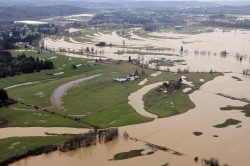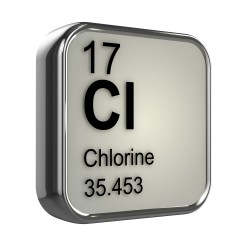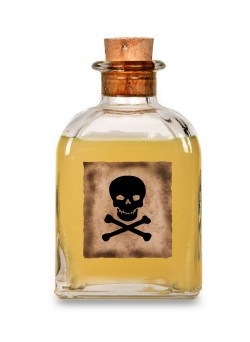
Evolution of Water Treatment
Ultraviolet (UV) Disinfection or UV water treatment, is a chemical-free solution to the risk of microbiological contamination.
Water Quality is a Forever Changing Thing
It’s probably not surprising to know that before there was adequate water treatment of public water systems, a lot of people got sick from water. Since the advent and standardization of water treatment for public water systems, most often with chlorine, the risk of water-borne illness as a public health issue has reduced dramatically. But, for people who are on private water systems, such as well water, there are no specific regulations regarding treatment, so they are essentially on their own to ensure the safety of their water. When a homeowner on a private well system gets a bad water test they are often encouraged to use chlorine to “shock” their well, hopefully removing microbiological contamination. However, water quality is a dynamic thing, and a water test will only represent a single snapshot in time. Flooding events, infiltration of the well by waste matter, or older, less ideal well construction can change water quality, and therefore water safety, literally overnight. Shock chlorination is only a short-term fix for a potentially long-term problem. Adding chemicals such as chlorine to water is a treatment often used, simply because it works. In this day and age, people are becoming more aware of the issues involved in adding chemicals to the water. Even chlorine has the potential of creating undesirable by-products in the water stream, referred to as “disinfection by-products”. More people are looking for other ways to treat water without chemicals. How did chemical treatment become such a standard in water treatment? Let’s explore the history behind chemical water treatment – specifically chlorine.
When a homeowner on a private well system gets a bad water test they are often encouraged to use chlorine to “shock” their well, hopefully removing microbiological contamination. However, water quality is a dynamic thing, and a water test will only represent a single snapshot in time. Flooding events, infiltration of the well by waste matter, or older, less ideal well construction can change water quality, and therefore water safety, literally overnight. Shock chlorination is only a short-term fix for a potentially long-term problem. Adding chemicals such as chlorine to water is a treatment often used, simply because it works. In this day and age, people are becoming more aware of the issues involved in adding chemicals to the water. Even chlorine has the potential of creating undesirable by-products in the water stream, referred to as “disinfection by-products”. More people are looking for other ways to treat water without chemicals. How did chemical treatment become such a standard in water treatment? Let’s explore the history behind chemical water treatment – specifically chlorine.
The History of Chlorine in Water Treatment
 The discovery of chlorine was first made in 1774 by a chemist named Karl Scheele. From that day forward, science was looking for ways to make use of these qualities of chlorine. By the 1800s, chemists had a much better understanding of chlorine’s properties, and in 1850, for the first time, chlorine was used by a doctor in London, England – John Snow, to attempt to treat the devastating outbreak of cholera in London’s poorest district. He had successfully traced the origin of the outbreak to a community well in a public square and poured chlorine into the well to try to stop the spread of the disease. His use of chlorine in this way led others to try to reproduce the results, and in 1897, “bleach solution” was used to sterilize potable water mains in England following a typhoid outbreak, quelling its spread. With firm evidence of chlorine’s usefulness in preventing water-borne illness, in 1908, New Jersey became the first district to begin using continuous chlorination. The unprecedented level of safety in public drinking water supplies that followed has been hailed as the greatest major public health achievement of the 20th century. It virtually eliminated potentially epidemic outbreaks of diseases in major populations and has saved countless millions of lives. They didn’t know it then, but chlorine can come with a cost. The creation of disinfection by-products is a reality and can pose a significant danger to people and to the environment as they are produced.
The discovery of chlorine was first made in 1774 by a chemist named Karl Scheele. From that day forward, science was looking for ways to make use of these qualities of chlorine. By the 1800s, chemists had a much better understanding of chlorine’s properties, and in 1850, for the first time, chlorine was used by a doctor in London, England – John Snow, to attempt to treat the devastating outbreak of cholera in London’s poorest district. He had successfully traced the origin of the outbreak to a community well in a public square and poured chlorine into the well to try to stop the spread of the disease. His use of chlorine in this way led others to try to reproduce the results, and in 1897, “bleach solution” was used to sterilize potable water mains in England following a typhoid outbreak, quelling its spread. With firm evidence of chlorine’s usefulness in preventing water-borne illness, in 1908, New Jersey became the first district to begin using continuous chlorination. The unprecedented level of safety in public drinking water supplies that followed has been hailed as the greatest major public health achievement of the 20th century. It virtually eliminated potentially epidemic outbreaks of diseases in major populations and has saved countless millions of lives. They didn’t know it then, but chlorine can come with a cost. The creation of disinfection by-products is a reality and can pose a significant danger to people and to the environment as they are produced.
An Overview of Disinfection By-products
Chlorine and other chemicals used in water treatment have the potential to create hundreds of different disinfection by-products. Some are harmless, and some can be extremely harmful. Of all of these chemicals, the two most harmful groups would be trihalomethanes (THMs) and haloacetic acids. The names sound long and intimidating, but what are they? Chlorine and many of the other chemicals used in water disinfection (peroxide, ozone, etc), are known as oxidizing agents. We will use chlorine as a standard example of what an “oxidizing agent” is. Chlorine molecules are added to the water, and they begin attacking microbes and stripping the cells of their cell walls, effectively destroying them. Even in today’s modern world, this process is not especially well understood by science. The end result, however, is the destruction of the pathogen. Despite the lack of knowledge about the actual process, it’s well established that this process does work to disinfect water. During the oxidation process, some of the chlorine is destroyed, but the chlorine that remains (called “residual”), can bond with other types of organic substance in the water. When this happens, it creates chemical products that are neither intentional, nor avoidable. Any organic matter in the water, such as decaying leaves, animal corpses, vegetation, or fecal matter can mingle with residual chlorine and create disinfection by-products.
Why Are Disinfection By-products A Problem?
Trihalomethanes and other disinfection by-products can be deadly. Trihalomethanes (THMs) and haloacetic acids are carcinogens that can have extremely detrimental effects on the body,  especially over long periods of time. These chemicals can cause health problems such as anemia, liver or kidney issues, and have been strongly linked to cancer. Some of these disinfection by-products are very volatile and vaporize easily into the air. Most can be absorbed through the skin. The Center for Disease Control (CDC) has stated that people who take a lot of hot baths or showers are especially at risk, as inhalation and dermal (skin) absorption in the shower accounts for more exposure to THMs than even drinking the water. These effects are from long-term exposure, and most people who are affected by these issues are not even aware these chemicals are present in their water. Standard filtration products do not remove disinfection by-products. If these chemicals are an issue for you, make sure to test your water, and get in touch with your local water treatment professional. Disinfection by-products can also collect in the environment via wastewater. They collect in bodies of water such as lakes and streams, and over time can cause serious environmental issues. There are many countries that are actively looking to reduce the amount of disinfection by-products produced by water treatment, and many of those countries are increasingly turning to chemical-free options.
especially over long periods of time. These chemicals can cause health problems such as anemia, liver or kidney issues, and have been strongly linked to cancer. Some of these disinfection by-products are very volatile and vaporize easily into the air. Most can be absorbed through the skin. The Center for Disease Control (CDC) has stated that people who take a lot of hot baths or showers are especially at risk, as inhalation and dermal (skin) absorption in the shower accounts for more exposure to THMs than even drinking the water. These effects are from long-term exposure, and most people who are affected by these issues are not even aware these chemicals are present in their water. Standard filtration products do not remove disinfection by-products. If these chemicals are an issue for you, make sure to test your water, and get in touch with your local water treatment professional. Disinfection by-products can also collect in the environment via wastewater. They collect in bodies of water such as lakes and streams, and over time can cause serious environmental issues. There are many countries that are actively looking to reduce the amount of disinfection by-products produced by water treatment, and many of those countries are increasingly turning to chemical-free options.
UV – the Simple Chemical-Free Option
With the potential issues regarding the use of chemicals in water becoming more of a concern, people are looking for alternative treatment technologies that are as effective as chemical treatment. Ultraviolet disinfection technology has come a very long way since it was first invented, and in today’s world, it’s an extremely cost-effective and reliable method of removing microbial contamination from water. Because UV disinfection is a physical process and does not require the use of potentially harmful chemicals, it does not create any disinfection by-products. It does nothing to alter the taste, pH, color or smell of water. There is no need to handle potentially dangerous chemicals, and it does not require the extra footprint of a contact tank. Ultraviolet disinfection does not have a strenuous maintenance schedule and is even effective against microbes and protozoan cysts that are highly resistant to chlorine, eliminating these threats from water with an effectiveness of 99.99%. Proven and tested by the largest municipal water treatment systems, UV is an excellent, low-maintenance way to disinfect drinking water. If you are feeling the urge to ditch chemicals, think UV.